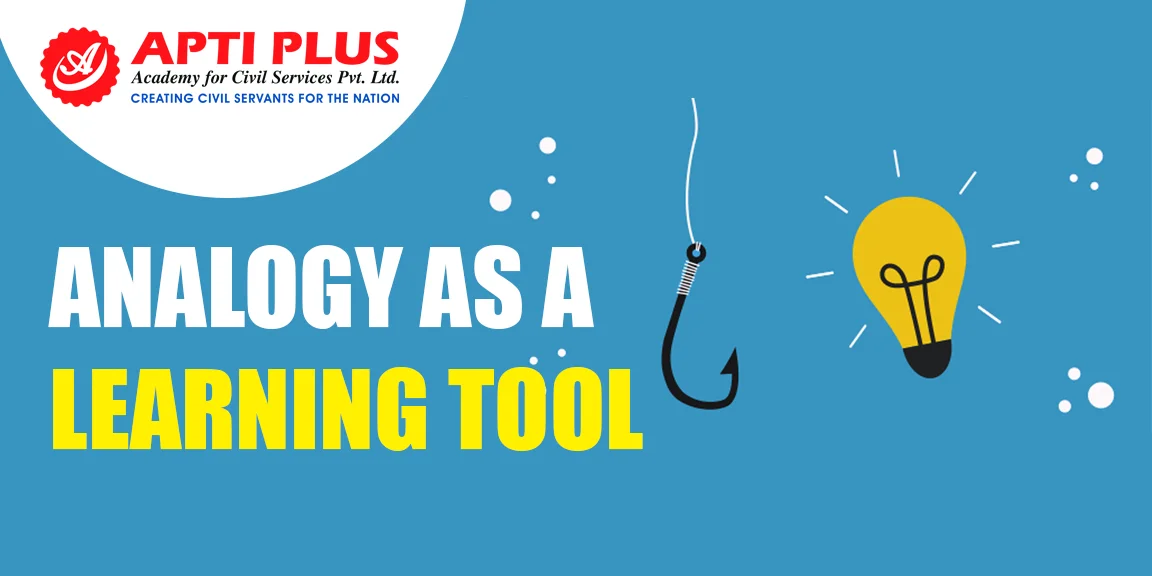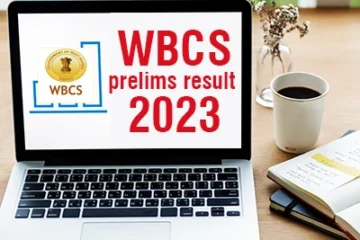There comes a time in every aspirant’s preparation phase when he/she feels like; that’s it! Aspirants can spend months and even years learning and memorizing all kinds of information and then end up tiring out. They are not able to retain the plethora of information. Moreover, in today’s competitive world, the stakes are high. One would want to make the most of all the time and resources poured into their preparation.
There comes a time in every aspirant’s preparation phase when he/she feels like; that’s it! Aspirants can spend months and even years learning and memorizing all kinds of information and then end up tiring out. They are not able to retain the plethora of information. Moreover, in today’s competitive world, the stakes are high. One would want to make the most of all the time and resources poured into their preparation.
One powerful tool that can come to the aid of the aspirants is ANALOGY.
It can unbundle the most complex of topics and make it accessible and comprehensible to any curious person.
What is Analogy?
An analogy is simply a comparison between two things. In this way, it is similar to the simile and metaphor. We use analogies all the time informally. In conversation, when you compare one situation to another, you’re using an analogy. ‘Life is like a box of chocolates’ is a simile that also compares analogous ideas–the uncertainty and variety in life experiences with the same in a box of chocolates.
Examples to show how it works?
Example 1
In the book ‘Selfish Gene’, Dawkins uses the analogy of oarsmen to explain that a gene only cooperates with other genes when cooperation increases the chances of its survival. In the analogy, oarsmen (or rowers) are individual genes.
A rowboat is the body of an organism. Each oarsman needs several teammates to fill a rowboat in order to so that he can win the race. Each oarsman is selfish, because he wants to win the race. But, likely, his chances of winning the race are increased when his teammates are a good fit with him.
For example, it helps if they all speak the same language. It also helps if four oarsmen are right-handed and four are left-handed. Dawkins’ metaphor makes clear that just as oarsmen sharing rowboat cooperate to win a race, genes sharing a body collaborate to ensure the body’s survival. It’s significant, though, that each oarsman cooperates not in order to help the other genes, but for much more selfish reasons: he wants to win the race. Dawkins uses this analogy to show how examples of cooperation in nature can mask selfish motivations. He thinks that every example of cooperative behavior is motivated by a gene interested in its own survival, just as every example of cooperation in the rowboat is motivated by an oarsman interested in winning the race.
Example 2
A lot of us would share a world view that says that the role of the genetic lottery in life outcomes should be minimised to the extent possible. As an analogy, imagine life as a football field. The field in its original shape is uneven. Therefore, ideologies such as socialism, communism argue that because the field is uneven, the game should be a draw.
But if the game is a draw, there’s no incentive to play and there are no spectators and no economy. You shrink all activity. What we would like to do is to level the field as much as possible and then allow people to go play and let the natural kind of balance emerge so that everyone gets to keep the fruits of his/her labor.
However, I think there is a fundamental tension here. We want people to keep the fruits of their labor, but we should also mitigate the amount of intergenerational transmission of inequality.
The problem is what people seem to do the most with their money is propagate their advantage to their offspring. Think of what people do in terms of schooling, health etc., for their children. So, I think the role of the state in the provision of basic services of health and education, is much more fundamental. It must provide quality health and education so that, we get to establish the kind of level playing field to mitigate the intergenerational inequity.
From the above two examples, it can be seen how analogy can be used to unbundle topics which are difficult to retain. Moreover, analogy is also an effective tool that can be used in essays, ethics paper as well as to answer questions in the interview.




